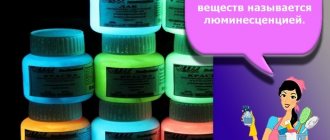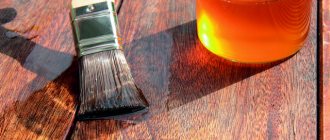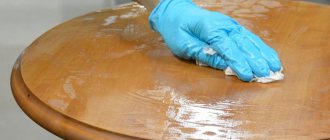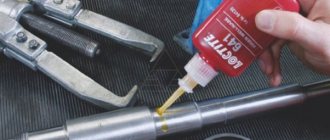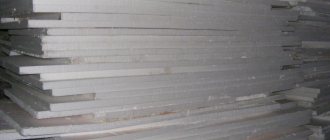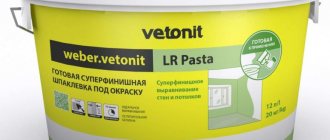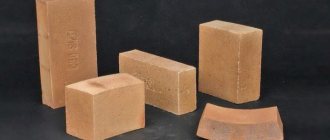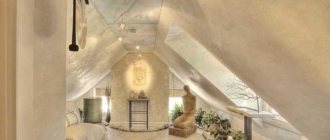Laminated veneer boards are a type of multi-layer wood product that is divided into several varieties. Due to special processing and excellent properties, the material has a wide range of uses. Laminated sheets come in several standard sizes, which allows them to be used for different construction and finishing processes.
What is laminated plywood?
The products are abbreviated as “FL” or “FLF”. According to regulatory documents, this is a laminated veneer board, which is covered with cladding on both sides. The finishing is a lamination, which improves the performance properties of the material and creates the desired decorative effect.
The basis is FSF multilayer plywood, which has excellent technical characteristics. For the manufacture of such a slab, deciduous tree veneer is used; coniferous varieties are used only for the internal segments.
To laminate the panel, treatment is carried out with the following substances:
- Resins based on phenol and formaldehyde. This finish ensures the reliability of the coating. Due to toxicity, the product is suitable for external use only.
- Melamine. It is a specially treated melamine-formaldehyde resin.
- Polyvinyl chloride (plastic). This is an organic polymer that creates a durable and resistant coating. The most preferred solution for internal processes.
The most durable and non-toxic lamination option is considered to be plastic finishing.
Thus, laminated products are a multi-layer veneer board of different tree species, which has an external plastic or resin lining.
Depending on the country of production, laminated materials are divided into the following groups:
- European or Finnish plywood. This is a high quality option that can be used in a variety of situations.
- Russian lined slabs. Inferior to the previous variety. Although there are enterprises that produce products that are a worthy alternative to foreign products.
- Chinese panels. The material is based on bamboo, poplar, eucalyptus wood, but most often of very low quality. There are sheets made from a mixture of sawdust, which are used for the internal segments.
European and most domestic manufacturers produce high-quality products, while Chinese products do not always match the quality
Conclusion
Laminated plywood has high technical characteristics, especially regarding its strength and moisture resistance. Therefore, it is often an indispensable material for outdoor work. However, when choosing, you should take into account that there are quite a few types of it on the market, differing in some important properties.
The video in this article contains additional information on the topic discussed. If you have any questions while reading the material, you can leave them in the comments, and we will be happy to answer them.
Types and brands
The variety of materials allows you to choose the appropriate solution for a specific situation.
Currently the following options are available:
- Mesh. This is a special category with a complex relief structure (see photo), which prevents slipping. This type of plywood has a small distribution and is used mainly for covering vehicles.
The texture of the mesh can be different; the main requirement for such coatings is the presence of an anti-slip effect and high strength of the front film - Moisture resistant. This category usually includes slabs with plastic (PVC) cladding, although other options also have good water resistance. Sheathing can be used in various rooms of a house and apartment, as well as for external work.
- Colored. There are 8 standard shades, divided into many tones. This is an excellent solution that allows you to get decor that matches the style of the interior.
The color range of decorative laminated plywood is quite wide, so the material is used in all types of interior finishing, as well as in the manufacture of furniture - Formwork. The peculiarity of this material is that the parts can withstand severe mechanical and chemical stress. The panels can be used multiple times, depending on the durability of the structure.
- Furniture. This is a high-quality variation, the formaldehyde emission class is E1.
If for furniture sheets the decorative component is the fundamental factor, then in models intended for arranging formwork, the main thing is water resistance and strength
- FOB or FFO. The abbreviation means “veneered plywood.” This group includes products that have a film coating impregnated with synthetic resins. Products can have different finishes: both sides are smooth;
- one surface is mesh, the other is smooth;
- The front part is embossed, the back part is untreated.
To quickly determine the type, the elements are marked: SP - paper; W – mesh; F – smooth.
The label on the packaging of laminated plywood contains a lot of useful information
Advice! It is better to choose products from trusted manufacturers, distributed through large stores and bases.
Assortment
The FOB assortment is determined by the external characteristics and quality of processing of the outer layer, which is expressed in the presence of various types of defects. The state standard determines the indicators for FOB I, II and III grades.
- Grade I - visible damage to the outer layer is excluded, spots up to 25x25 mm in size are possible at the rate of 1 pc/sq.m, point distortions of the structure, film swelling, pressure from slabs and debris are unacceptable;
- Grade II - overlaps are allowed, the absence of up to 1% of the outer film coating, signs of defects in the internal layers of veneer, spots and stripes, painted over chips, a change in structure not exceeding 10% without signs of damage to the veneer;
- Grade III - possible absence of facing and overlay films, presence of stains and stripes, adhered fragments of film on top, scratches, prints from debris, chips.
Characteristics
Excellent properties determine the popularity of the material.
Main parameters:
- Density – at least 650–700 kg/m3. Low-quality options have values in the range of 500 kg/m3, and are therefore not suitable for complex processes.
- Residual humidity does not exceed 8–10%.
- Bending strength – 60 MPa, tensile strength – 40 MPa.
- Sound insulation – up to 40 dB.
- Formaldehyde emission class is E1.
- Grade – 1/1, 1/2, 2/2.
- Edge protection – PVC or waterproof acrylic paint.
Production is carried out in accordance with GOST, TU, DIN, EN and hygienic standards. European quality standards have been developed for a wider group of varieties.
Dimensions and weight
The most common ratios are:
- 1220 x 2440 mm (W x D). Depending on the thickness, the weight is: 6 mm – 10 kg; 9 mm – 18 kg; mm – 23.7 kg; 18 mm – 35.6 kg; 21 mm – 41.6 kg.
- 1250 x 2500 mm: 6 mm – 11 kg; 9 mm – 18.6 kg; 12 mm – 25 kg; 18 mm – 37.4 kg; 21 mm – 43.6 kg.
A 6 mm plywood sheet has the minimum dimensions, but some manufacturers produce 4 mm products. The maximum thickness is 40 mm. Such a variety of options allows you to choose the optimal solution for a specific task.
Both domestic and foreign plywood manufacturers try to adhere to uniform product dimensions
Application of laminate
To obtain a laminated surface, thin protective films are placed on the plywood, which are pressed at a temperature of 136 ℃.
The time for applying the protective layer of the laminate depends on the thickness of the plywood layer and the type of polymer agent. To obtain coatings the following is used:
- melamine compounds;
- phenol-formaldehyde macromolecules;
- vinyl chloride polymers.
The process is carried out quickly. The maximum amount of time required for recording is 10 minutes. After heating, the thermosetting coating hardens completely and irreversibly.
On some types of plywood, the protective function is performed by paper oiled or impregnated with resins and secured using presses.
After receiving the laminated surface, they begin to process the ends, which must be done to ensure the durability of the plywood. They are usually coated with acrylic compounds.
Production Features
Description of the technology for manufacturing sheet products:
- Mostly birch wood is chosen for work. The use of coniferous species is allowed, but only for the core. The raw materials undergo standard preparation and peeling on a special machine.
- The veneer is sent for discarding. To glue the layers, a mixture based on phenol-formaldehyde resins is used.
- Pressing is carried out under pressure and temperature.
- The slabs are given a format and the surfaces are polished.
- The panels are laminated with a film of the desired color, the most popular being white and black. To ensure a secure fit, the surface is exposed to thermal effects.
- The edges are processed.
Laminated boards cannot be made using homemade equipment; this process involves multi-stage impregnation and processing of the material, this actually explains the high price of the product.
If low-quality raw materials were used or the technology was violated, the product will not meet the declared characteristics.
On a note! The manufacturer must indicate the norm or standard on the basis of which the plywood was manufactured.
Scope of application
Areas of use of laminated veneer sheets:
- Construction works. The sheets are suitable for installation of formwork, cladding of temporary storage areas, cladding of facades of residential and technical facilities. The used material can be laid on scaffolding.
- Finishing processes. The panels are used for constructing partitions and leveling walls. Laying on horizontal and vertical bases as a rough and finishing layer is allowed.
- Furniture manufacturing. Due to its reliability and strength, the material is significantly superior to laminated chipboard.
- Mechanical engineering. The product is an ideal solution for body cladding and is also used for interior decoration of railway cars and ships.
Laminated plywood has high performance characteristics, so the range of applications for this material is very wide.
The popularity of plywood is limited by its high price.
Colored coatings
Pigments can be added to the synthetic layer to give a particular color to the material.
White laminated plywood can be used to decorate the bathroom and other wet rooms in the apartment. At the request of customers, many enterprises are ready to make products in different colors. Modern technologies make it possible to quickly apply dyes to laminated wood products.
Bright colored sheets are used for the construction of children's playgrounds.
Darker or lighter laminated plywood is used for the production of vans, seats in public places, and partitions in transport.
